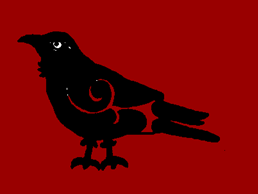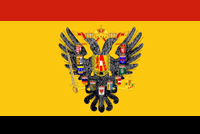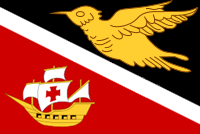Handbook to the Kingdom of Rheged


"Here we stand!"
Capital: Penrith
Head of State: Tzarina Alexia I/King Edmund II Glawis
Prime Minister: Aran Tyne
Politics: Rheged has a House of Parliament, although the King, elected by the Dukes of the Teyrnas, is the centre of most political power. Gwlad Cloi is in place in Rheged, which is firmly Chevalier in outlook.
Population: 1,947,750,000
Ethnic Breakdown:
82% Djel (6% Moskauan)
10% Elven (nearly all Nordu)
6% Hangwaed
2% Diocletian
Religious Breakdown:
83% Episcopal Church of Cyro
12% Church of Worms
5% Other (mostly Christian)
Official Languages and Fluency Rates:
100% English - The Rhegeditian accent is similar to that found in 'Sheffield'.
2% High Dyellian
General:Rheged is a huge Teyrnas that completely controls the world that shares its name. It has a self sustaining economy with a notable export sector in processed and semi-processed agricultural goods. Geographically, the world of Rheged is broadly similar to an earth environment although on average a degree colder across the planet. It has slightly less water and most land is concentrated in one large continent. Population density is generally low, although mostly clustered in the temperate zone of the northern hemisphere.
Cultrually Rheged has been described as 'semi-Brythonic'. While Brythonic values are often seen as ideal, the population lives more opulently and is more urbanised. Unlike Brythonic society's, Rheged has a landed nobility with inheritable titles. The only exception to this is the title of King. At the death of a monarch a new one is elected by the Dukes of the Realm, usually from among the Dukes.
Military:
While capably trained, the Military and Trained Bands of Rheged are completely untested in the field with the exception of the 'Raven Guard' who have been known to act as an expeditionary force on occasion. These troops are seen as solid, competent soldiers, with an elan that matches units such as the Ever Victorious Army of Guyaland and Statenland's Revolutionary Guard. 0.58% of the Rhegeditian population is under arms.
Army: The Army of the Kingdom is commanded by Senior Field Marshall David Lloyd. The Army is organised into the North Rheged and South Rheged Corps (each 100 Divisions). Organisation is Brythonic.
All up the Army can field 1,300,000 Combat Infantry, 67,200 Self Propelled Artillery Carriages, 12,000 AA vehicles, 60,000 Guns, 16,000 Attack Helicopters and numerous non combat vehicles. The Army currently employs 5,100,000 personnel.
Rheged, like all Brythonic militaries, does not have any dedicated tanks. Its self propelled artillery fill this role (although it manufactures the 'Caroline' Main Battle Tank).
Air Force: The Kingdom has two Air Forces, each of 10 Sectors, commanded by Grand Air Marshall Alexandra Lee (A Djel, despite the Guyan name).
All up the Airforce can field 10,800 space capable fighters, 4,800 supersonic fighters, 14,400 subsonic fighters, 4,560 CAS aircraft, 240 torpedo bombers, 3,200 heavy bombers, 6,080 medium bombers, 320 naval bombers, 2,800 transports, 3,200 refuelling aircraft and 800 control aircraft. In addition to this the airforce are responsible for 2,000 SAM sites and an unspecified number of ICBM launch facilities (3,200 missiles). The Airforce currently employs 5,300,000 personnel.
Space Navy: The Space Navy, commander by Grand Admiral Swithen Franco is made up of vessels supplied by Outremere and is almost a direct carbon copy of the Helegdorian fleet.
All up the Confederated Duchies can field 6 Carriers, 17 Battleships, 110 Cruisers, 330 Destroyers, 330 Corvettes, 1,100 Fighters, 135 Deep Space Scouting Vessels and 170 Transports. In addition to this, the Space Navy commands 3 Brigades of Marines, with an effective combat strength of 66,600 infantry. The Navy currently employs 927,000 personnel.






